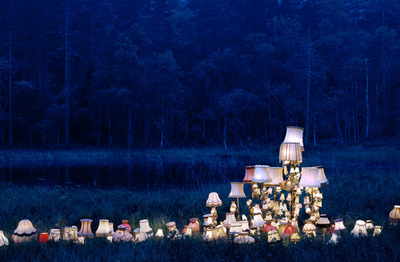|
There exists a certain magical intrigue about boxes. How we like to compartmentalize everything. How the packaging industry of today is just feeding of our instinctive need to relate everything in a box to be more precious and more valued.
From presents on Christmas and Birthdays; to treasured memories - wedding dresses, love letters; to loved ones who passed. We put everything in a box specific to that. I was thinking of making tangrams for my next project but I am far more interested in making the box that they will be stored in. There is a section in fine arts called functional ceramics but why is it that functional sculpture becomes a craft? Can I make really beautiful and well thought our boxes as fine art? I am looking to merge the wood and clay to create boxes maybe for the tangrams or for whatever else I think deserving enough to be in a box. Born in Los Angeles, California, to an American mother and a Japanese father, Noguchi lived in Japan until the age of thirteen, when he moved to Indiana. Coming from the Orient during the time period, it is easy to understand why Noguchi set out to have such strict and imposing rules for his artwork. According to Constantly emphasising on purity of form as ways of working, he obsessed with having his work be 'honest' rather than to recast them out of different materials like plaster. I guess he was in his way trying to preserve what little culture he felt he could still have and express them, he worked in stone mostly and later granite, creating architectural forms, landscapes with both geometric and organic shapes. After seeing an exhibition in New York, Noguchi worked at Brancusi’s studio. Inspired by the older artist’s reductive forms, Noguchi turned to modernism and a kind of abstraction, infusing his highly finished pieces with a lyrical and emotional expressiveness, and with an aura of mystery. His sculptural works dealing with the void came out of these experience no doubt however, his later years where he turned to mass production of his interior designs is what fascinates me the most. He was undoubtedly and artist and designer who boldy rode the lines that separate the two. Noguchi managed to change design of industrialized objects through minimalism rooted fundamentally in art. This tumblr site called "Fuck Your Noguchi Table" catalogs interior spaces that I think is reminicent of Noguchi's industrial designs and art pieces. While the article made Noguchi sound like an uptight person who is overly controlling over the material and make of objects, I would like to end with this quote from Noguchi found on the Herman Milller website. "To limit yourself to a particular style may make you an expert of that particular viewpoint or school, but I do not wish to belong to any school," he said. "I am always learning, always discovering." I have been working with the geometric shapes for a while and came across the idea of making ceramic Tangrams focusing on the line between play and fragility of the ceramic material. Older antique tangrams are beautifully carved and exquisite, made out of ivory, wood, jade, clay etc. But today most of them are just blocks of wood with different colours. I have been looking into different glazes and thinking of different ways to create this fun yet challenging ceramic blocks. While I am hyper excited at the idea of making tangrams, a part of me wonder if it is considered 'art' to create something that is old and classic. What new stuff would I bring to the table? where is the line between art and design. Can well crafted design and marketable items still be considered art? It brings back to the whole Fontana and Melotti article where stuff made to be used in the home can still be classified as art or do they just become industrialised objects? While some of us know about tangram, here is an interesting and brief article summarising tangrams, it's history and how it has come to be the world's first puzzle craze. I always imagined that the first time Thomas Edison switched on the light bulb people secretly thought that he was a wizard. Think about it, lights, the things we take for granted are basically magical, like little balls of sun. And lighting, chandeliers that hang from the ceiling are like magic balls of light that are suspended in the air. If you still need convincing check out these magical installations by Norwegian artist Rune Guneriussen. So instead of lamps I was thinking of making some chandeliers, blending ceramic, wood and maybe even metal to create a series of lights that are simply magical. Here are some of my inspiration.
|
/a blog about/
|























 RSS Feed
RSS Feed
